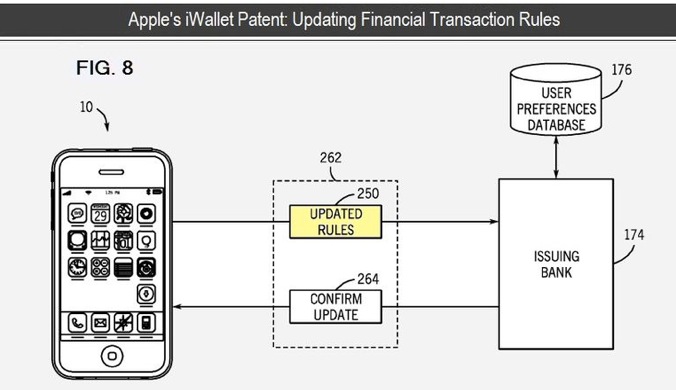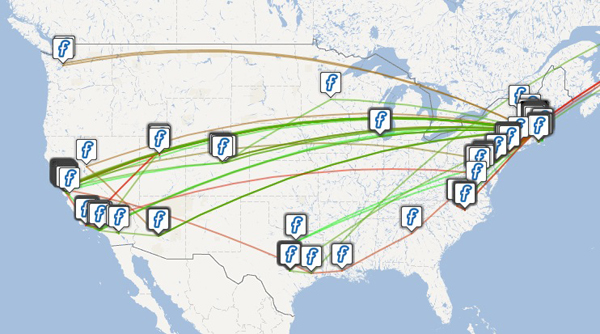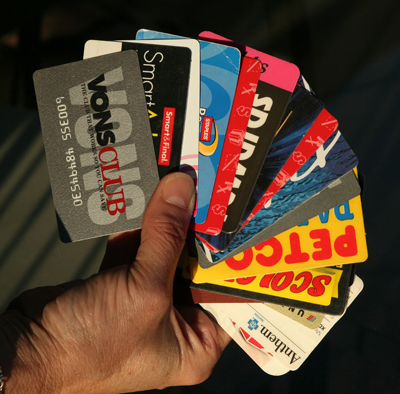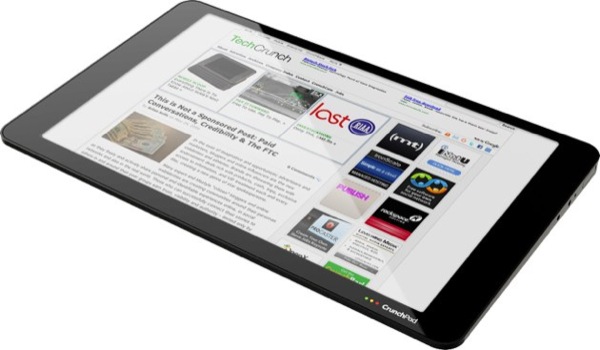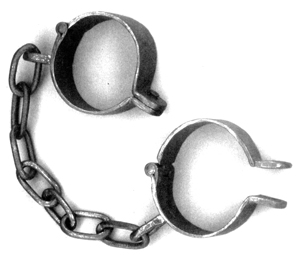
In response to The Trillion Dollar Market, which adds a few paragraphs to Gain of Facebook (below), which responded to How Facebook Could Create a Revolution, Do Good, and Make Billions, by Bernard Lunn in ReadWriteWeb, Nate Ritter raised some questions that I’d like to answer in detail. We begin…
…one question that needs to be solved is that if both suppliers and demanders are getting value out of the transaction why is it the suppliers are always fronting the money to make the connection?
The short answer is that we’ve done it that way ever since Industry won the Industrial Revolution. The long answer is that customer choice in the prevailing industrial system is provided by sellers to buyers they “target,” “acquire,” “control,” “manage” and “lock in.” These efforts include telling captives what their choices are. We call this “marketing”.
At the level of simple customer choice, the industrial system is no different than it was when sellers operated out of carts and stalls at village crossroads. Such is the nature of straightforward retailing. But in our industrial system, sellers sit out at the last link of many value chains. Exchanging goods and services for money is a small part of that system. The final transaction is just the far end of a process that moves from source to sale through a series of complex stages in which individual customers have little if any direct say. At the end of those stages, the customer’s choice is to buy or not to buy. The customer’s job is to consume, and not to do much more than that. It works well enough, but it is also open to countless improvements in a world where everybody is approximately zero distance from everybody else. That world is the Internet. And it’s new.
The Net makes it easy—or should make it easy—for customers to advertise what they want. That is, to find and drive supply. To a very limited degree, the supply side helps this with CRM (Customer Relationship Management) systems, but those systems are all silo’d and allow very limited input from customers themselves. Put crudely, they have ways of making you talk—with a minimal set of allowable words and phrases.
If this weren’t already broken enough, many sellers’ sites and systems are also poorly designed or maintained. Think about what we all go through when we need customer service or tech support. Why should you have to give a series of call center people your account and phone numbers, even after you’ve already punched them in, time and again? These systems are lame because they put all responsibility for maintaining a “relationship” on the sell side. They exclude most forms of customer input because they don’t want more variables than they can easily “manage”. That excludes countless clues about what the market is up to, in addition to countless sums of money left on tables they can’t see through the CRM blinders they wear.
To be clear, I’m not saying CRM is inherently bad. I am saying it’s no closer to what we need than AOL and Compuserve were to the Internet, or than mainframes were to PCs.
What VRM proposes is shifting relationship responsibility to customers as well as sellers, for the simple reason that the customer is, for many purposes, the best point of integration for his or her own data—and the best point of origination for what can be done with it.
For example, a customer’s VRM system should be able to say, globally, “I want receipts emailed to me. Here is my email address. You can do business with me if you don’t share that address with anybody, and if you don’t send me unwanted emails. Sign here (digitally) if you agree to these terms.”
Yes, that may sound scary to sellers, but guess what? The customer-control horse left the seller’s barn as soon as the Internet came along. All that precious customer data that sellers think they own is a tiny fraction of what they can gain from independent customers in relationships where both sides are open to whatever the other brings to the table. In other words, relationships in which sellers do not speak of “acquiring”, “managing”, “controlling”, “owning” or “locking in” customers as if they were slaves or livestock.
What VRM offers are better ways for sellers and buyers to relate—as equals with a wide range of options. Yes, we’ll need open and standard protocols, data types, and methodologies. Not to mention agreements that the customer (and not just the seller) asserts. We’re working on all that stuff.
Next item…
I have a feeling the culture of consumerism dissuades consumers from believing they are giving up anything (or devalues the money they are giving away for the product/service). For example, the belief that everything is free that is on the web. That’s an inherent problem that has to be solved before there will be an market that starts with the consumers. The “market’ necessitates a trade of value, and if one side is inherently told that what they want is free, then why would they give up money to trade for it?
First, what we call “consumerism” should be re-labeled “producerism”, because it’s a phenomenon driven by production. As Thorstein Veblen put it long ago (and I used to put it before discovering Veblen said it first), invention is the mother of necessity. Consumers participate, of course, but they don’t drive it. The production side does.
Of course, I’m speaking on the general scale, and of course there are definitely products and services that exist because people wanted them to. And of course they do well in charging for something because the demographic believes it’s worth the trade. But that’s not a change of the macro market. And although it’s nice and warm and fuzzy, the reality is that on a large scale people are simply being conditioned to take things for free. They don’t want to trade value for value.
When Napster came along, and suddenly everybody’s CD collection was free for the taking, “everything is free” became a mantra. Nobody, it seemed, would ever pay for music again. Why would they, when all of it is free, and one’s chances of getting caught and nailed by the RIAA and its running dogs were so small? Then Apple created the iPod and iTunes and the iTunes store, and started charging 99¢ for medium-fi music that didn’t work on more than five “authorized” devices. And people ate it up. Suddenly music had two price points: $.00 for illegal music and $.99 for legal but crippled music. How big is the latter business? Said here two years ago that Apple had already sold 2.5 billion songs. And how much has the former non-business driven the whole music industry in a new direction? Why cry about how disruptive the Internet is, and how much it devalues every old business it touches*, when it’s an expanding planet-sized environment on which countless new businesses can be built to do far more, and make money from (and for) many more people, and companies, than the old ones?
My point: it’s early. The Net is a giant zero between everything and everybody. It removes distance and reduces the costs of connection, storage, and distribution in the direction of zero.
There is still plenty of money to be made at the commodity level (just ask Nick Carr, or Amazon), but that’s one more reason why the Giant Zero is a great place to build all kinds of new businesses. And why it’s still very, very early in what Craig Burton calls the “terraforming” of the Net’s new world.
The point of my two postings (in the first sentence up top) is that there is much more money to be made in helping demand find and drive supply than in helping supply find and drive demand. And that this will be much better for the supply side than the old system, where suppliers have to do it all.
I wish it weren’t that way. Perhaps some day it won’t be. But we have to start changing the message that we’re sending out there, or even better than pushing a message, finding the areas where people are indicating they’re willing to pay for a product to be created. Harder done than said.
True. But we’ve already started. If one looks at markets (or economies) as places where parties signal each other, we’re already well underway. Nate himself did a heroic job of putting Twitter on the map as a great signaling system on the Live Web during real-world emergencies. In his case, it was the San Diego Fire. It’s conceivable that what the market learned in that experience helped save my own house during the two recent fires in Santa Barbara.
Last winter I used Twitter successfully to signal our family’s interest in a good restaurant during a layover at O’Hare. This was way less significant than what Nate did during a huge fire, but no less eye-opening for me.
Still, tweeting—microblogging—is just one early step in a direction where lies an endless variety of signals that can move from demand to supply. VRM is about creating open, standard, and simple pro forma ways of doing that.
* Tom Foremski is right when he says The Internet Devalues Everything It Touches, Anything That Can Be Digitized. But you have to read Tom’s points deeply to get the full implications. Losing the old will be painful. But there is far more value to be found in the new. For example, in fourth parties.


